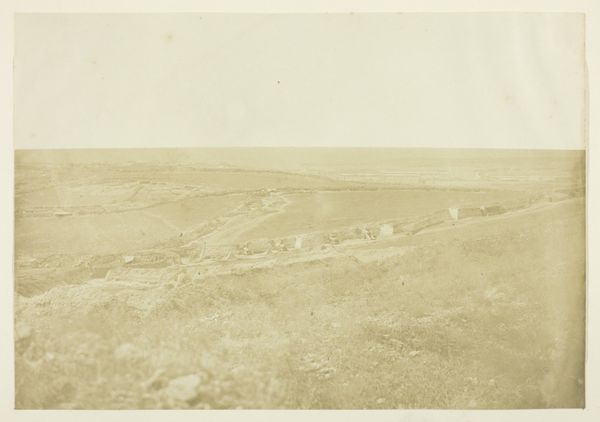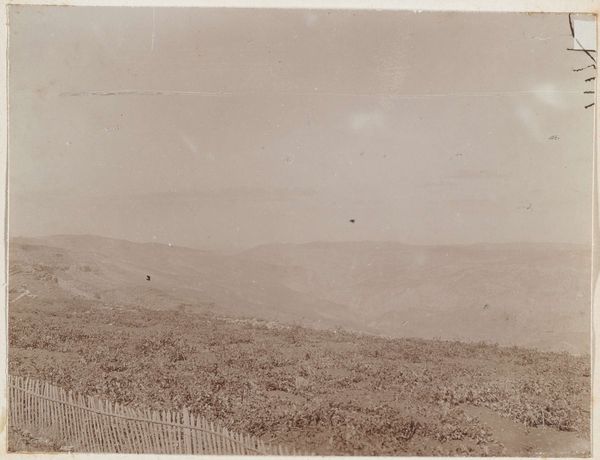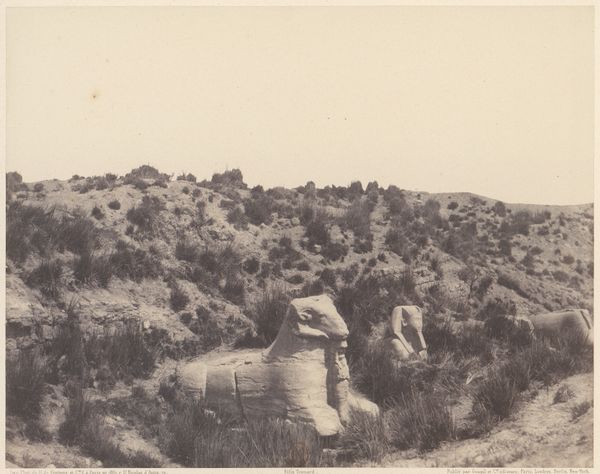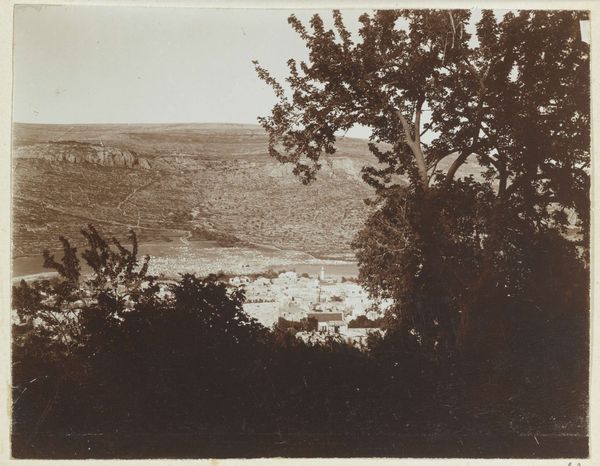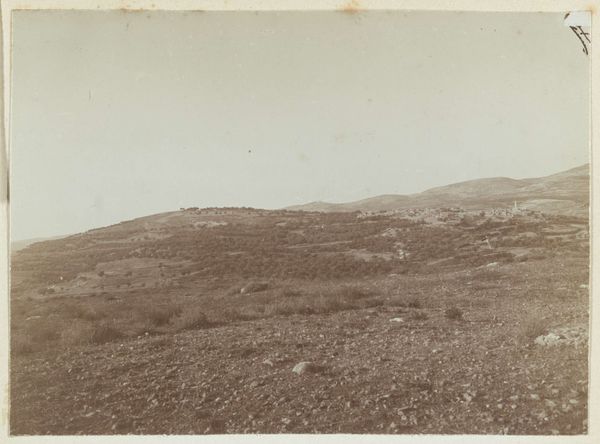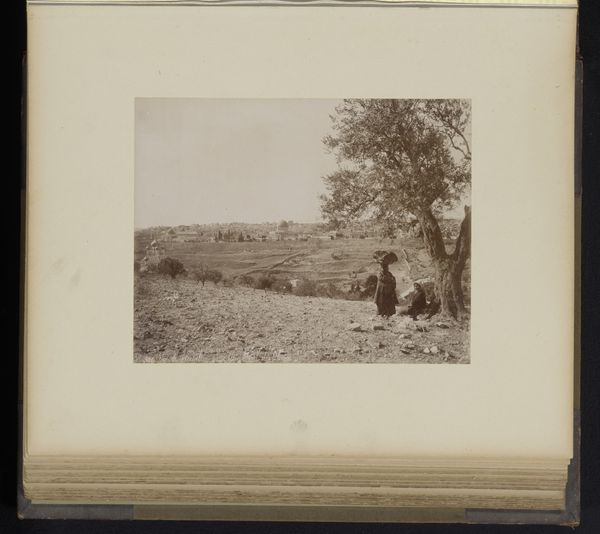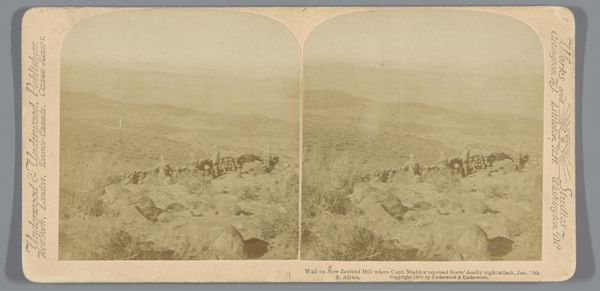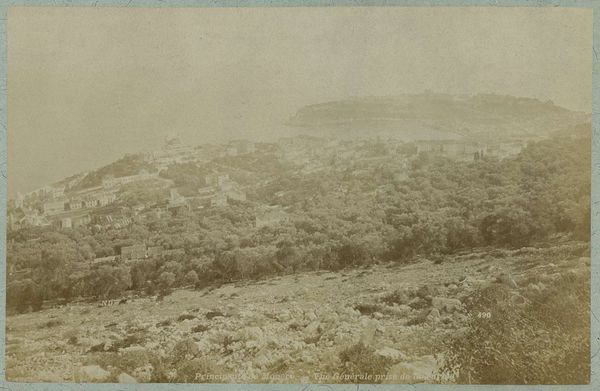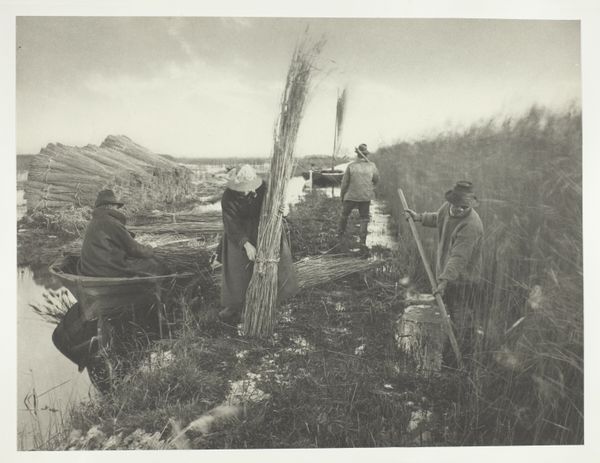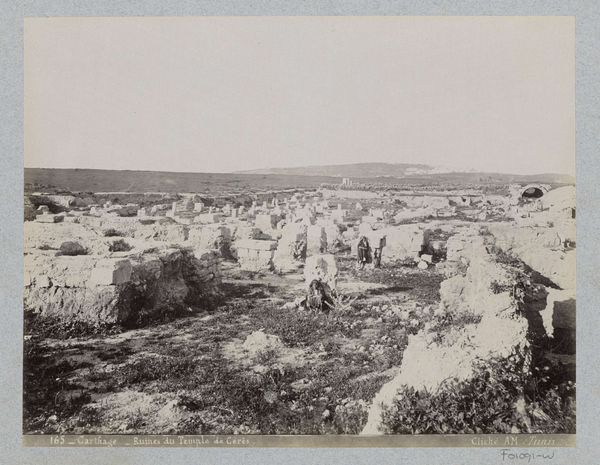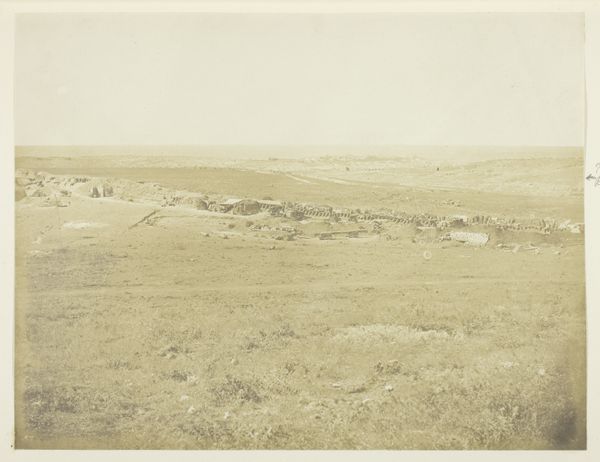
Visit to an Oil Field in Purissima Hills, USA Possibly 1908
0:00
0:00
geldolphadriaankessler
Rijksmuseum
photography
#
portrait
#
aged paper
#
toned paper
#
landscape
#
photography
#
realism
Dimensions: height 74 mm, width 100 mm, height 363 mm, width 268 mm
Copyright: Rijks Museum: Open Domain
Curator: This gelatin silver print, potentially dating back to 1908, captures a "Visit to an Oil Field in Purissima Hills, USA," by Geldolph Adriaan Kessler. Editor: It feels muted, almost faded, doesn't it? The sepia tones give it this incredibly wistful, melancholic mood, despite being about an oil field – which, let's be honest, is not usually a scene dripping in sorrow. Curator: Well, I think understanding Kessler's background provides insight here. He came from a family deeply involved in the oil industry; photography was likely a means to document and perhaps even promote their business interests. This image allows us a glimpse into the history and rise of the oil industry and the complex dynamics that defined resource extraction in the United States. Editor: Interesting. So, the staging of three men gazing towards the site—do we think that has political undertones? This feels less like candid observation and more like calculated visual propaganda. I find myself questioning the gaze presented: who benefits from this particular presentation of the landscape? Curator: Absolutely. Consider also how these industrial landscapes, in photographic representations like this one, contributed to shifting ideas of progress, modernity, and the relationship between humans and nature. Photography here legitimizes this exploitation by framing it as a part of progress. Editor: And the men in the photo-- the garb, the attitude, all seems geared towards legitimization. Are we seeing the dawn of the corporate suit making an appearance on site? Even if it is an outdoor excursion. This image functions as evidence, really. Curator: It does. And its current placement at the Rijksmuseum speaks to the lasting impact of the resource and industry. It invites contemporary viewers to reflect on our continued dependence and also on the visual narratives constructed around these industries throughout history. It encourages an evaluation of both technological advancements and ethical concerns in a more socially aware perspective. Editor: Definitely, understanding that placement and context encourages a more critical reading, far beyond its initial impression as a straightforward documentation. Curator: Exactly. It reminds us that even seemingly objective representations are laden with layers of meaning and influence, subtly shaping our perception of the world and its resources. Editor: Precisely. Art acts a visual medium of production processes. Food for thought.
Comments
rijksmuseum about 2 years ago
⋮
In 1908 Kessler accompanied the director of Koninklijke Olie (Royal Dutch Petroleum Company, later Shell), Henri Deterding, as secretary on a world tour. He travelled to Canada and the United States via the Dutch East Indies, Singapore, China, and Japan. Dolph’s photo album contains pictures of an oil field in California, as well as San Francisco’s town hall which had collapsed during an earthquake.
Join the conversation
Join millions of artists and users on Artera today and experience the ultimate creative platform.
